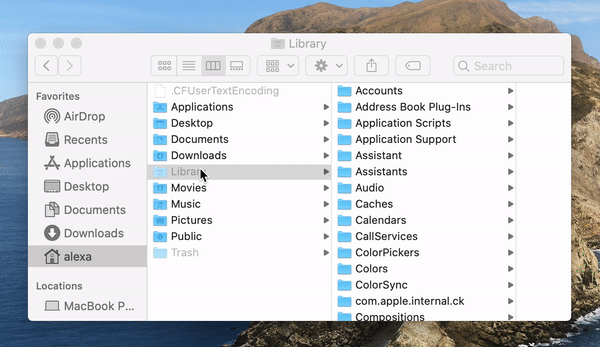

Now, I don't know if it will disappear after the next Mac OS X update, but it's not that difficult to add it to your favorites again if it fails to make the leap. Simply drag the Library folder to the sidebar to add it to your favorites, where it will remain visible. Open the Library folder and select the column view so that you can see the Library folder itself (and not just its contents). It shows up between the Home and Computer menu options. If you’re not sure if you need them or not, you can try to search the name of the folder or files. Here you can open up each folder and delete unneeded cache files by dragging them to the Trash and then emptying it. Your system, or library, caches will appear. To access the Library folder, open the Finder and then, while viewing the Go pull-down menu, hold down the Option key to see the Library. Type in /Library/Caches/ and then click Go. Go to Finder > Go and press either the Option key or the Shift key and select library. You can also skip all this clicking by pressing Command+Shift+G on your keyboard to access the Go to Folder menu. Then click Go in the menu bar, and select Go to Folder. Open Finder, or just click on the desktop. Now start Time Machine by clicking on its icon in the dock viol, you have what you want: When you want to access another invisible folder that is not listed in the 'Go' list in Finder you can go to the same folder and choose for 'Go to Folder' or Command Shift G.
 Click the 'Library' shortcut which appears. If you just need to access it occasionally, this is the fastest way. The finder shows the content of /Users/
Click the 'Library' shortcut which appears. If you just need to access it occasionally, this is the fastest way. The finder shows the content of /Users/For temporary access to your user library. Live files are usually stored in three locations, the Application Support, Caches and Preferences folders contained within the user level Library on Mac (Macintosh HD/Users/your username/Library): Open Finder. Use the Terminal Command: chflags nohidden /Library/ or open /Library. Then check the box for Show Library Folder.

Although arguably well-intentioned, this change was frustrating for longtime Mac power. If you are the curious or the restless type and need regular access to the hidden Library folder, here's a tip to add it to your Favorites. Select your User folder, and press Command+ J. With the release of Mac OS X Lion way back in 2011, Apple removed easy access to the user’s Library folder. When Apple rolled out Mac OS X Lion, it decided to hide the Library folder, which houses preferences and settings that help keep the OS and your apps running smoothly. I haven't tried it to verify it works, but there is a faster way to make the Library folder visible.įor most Mac users, the Library folder remains out of sight, out of mind. On LifeHacker today, there is a post about an Applescript that unhides the Library folder on your Mac.


 0 kommentar(er)
0 kommentar(er)
